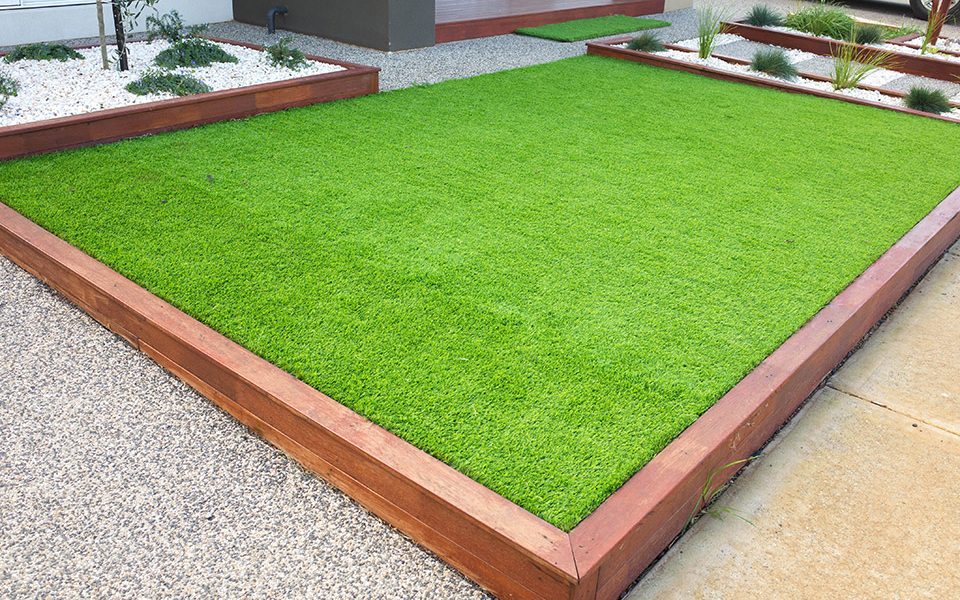Turf Grass: Keeping A Green Lawn All Year Round
Keeping nice grass is the goal of every homeowner. It is a beautiful thing to raise and maintain a lawn. You can use a healthy green lawn differently, from a flower-filled meadow to a highly formal garden.
While early fall and summer can be tough on your grass, you can keep your lawn green all year round with good practices and approaches. Here is our thoughtful approach to doing that.
1. Proper Watering
Properly watering your lawn is an essential practice to ensure a healthy lawn. You can water too little or too much. But doing it right is the best way to maintain a healthy green lawn.
How to Do It Right
You do not need to water established lawns much. An inch every week is enough. Sometimes over-watering can damage your lawn more than sun exposure and harsh chemicals.
Too much water encourages shallow roots in the grass. Training your grass to progress deeper helps strengthen and enhance its root system, enabling it to survive harsh conditions like drought and high traffic.
Also, there is no need to irrigate your lawn during the rainy season. Keep the sprinklers off if the weather has been good for your grass.
But during the dry season, you can irrigate the lawn. A good rule of thumb is to water in the morning between 4 am and 10 am to avoid water loss to evaporation upon the full heat of the day.
Plus, it gives time for your lawn to dry before nightfall- unlike watering in the evening, when turf remains soggy overnight, resulting in fungal growth that may damage your lawn.
Your grass will also tell you when it is thirsty. Here are signs to look out for:
- A blue-gray appearance
- Folded leaf blades
- The lawn doesn’t spring back when stepped on, leaving visible footprints on the grass
2. Mow Thoughtfully
Lawn mowing is as necessary as watering. Done wrong, and your green expanse could turn brown and unsightly. How you mow and what tool you use will all make a difference in maintaining a healthy lawn.
Why Mow?
Mowing stimulates lawn growth. The purpose of a grass plant in life is photosynthesis – drawing in water from the earth, energy from the sun, and carbon from the air to grow roots and blades of grass. When you cut grass tips, they grow more.
This results in a thick lawn with better roots which moves out weed and makes the lawn accessible for activities like playing catch.
How To Mow
Achieving a healthy lawn requires proper mowing practices. First, know the correct height of your turf variety. During summer, always cut at the ultimate end of your lawn’s recommended size. The additional height helps reduce evaporation and keep the soil cool.
Mowing can also be stressful for your turf. To keep it in good condition, never cut more than 1/3 of the lawn’s blade length. If the grass grows too long, you may have to apply several passes with the mower, keeping the deck lower on each pass. Other good mowing practices include:
- Mowing when the grass is dry as wet grass makes it difficult for the mower to make a clean cut.
- Leaving grass clippings on the lawn to return valued nutrients to the soil, acting as compost for the grass.
- Maintaining sharp mower blades. Dull mower blades rip the grass, making them susceptible to pests and diseases.
3. Rake Your Leaves
While fallen leaves nourish the soil, they will deprive the grass of air, sunlight, and water if left on the turf whole. If you despise raking leaves, you can use a mulching mower and leave them. If you want to remove them altogether, you can use a grass catcher on the mower to collect and include them in your compost pile.
4. Keep off Grass
Among the joys of keeping a green lawn is using it all summer. It is a great place to relax, play, or even host a party. Running barefoot on the grass is also a great feeling.
However, the effect of excessive foot traffic is bare or thin spots. While you want to have great moments on your turf, be mindful of how much stress you apply to it. After heavy use, allow your grass to recover. Also, do not park heavy machinery or vehicles on your lawn.
5. Fertilize
After assessing your soil pH, you must add the proper nutrients for ideal results. Unfortunately, fertilizers are different. Some are for killing or preventing weeds, while others simply provide that lush green color to your yard.
However, the biggest reason people fertilize their lawns is to stimulate growth and keep it healthy. A good fertilizer will improve your lawn’s root system helping it reach deeper and hold better.
Consult a professional to ascertain the right fertilizer for your lawn. Most professionals will often recommend a mixture of fast- and slow-release fertilizers for immediate improvements on your lawn.
Excessive fertilizing can damage your lawn and cause an excess amount of it to run off into water bodies, leading to unhealthy algae growth plus toxicity to marine life. Four applications a year should give you a healthy lawn: early spring, late spring, late summer, and fall.
6. Switch to Synthetic Grass
And if you are seriously having trouble keeping your lawn green, remember that there is always an option to switch to artificial grass.
Considering that it does not grow, it will stay in the same condition as when you bought it with minimal maintenance. Nowadays, this grass is commercially available and looks excellent. So much that you can easily confuse it with natural grass. And with minimal care, they can last you all year round.
In conclusion, having a beautiful lawn is one thing; maintaining it all year round is something different. While you can spend time and money trying to remove disease and weeds or fungus conditions, watering, proper lawn fertilization, and mowing offer the essential ingredients for a healthy green lawn that can serve you for years.


